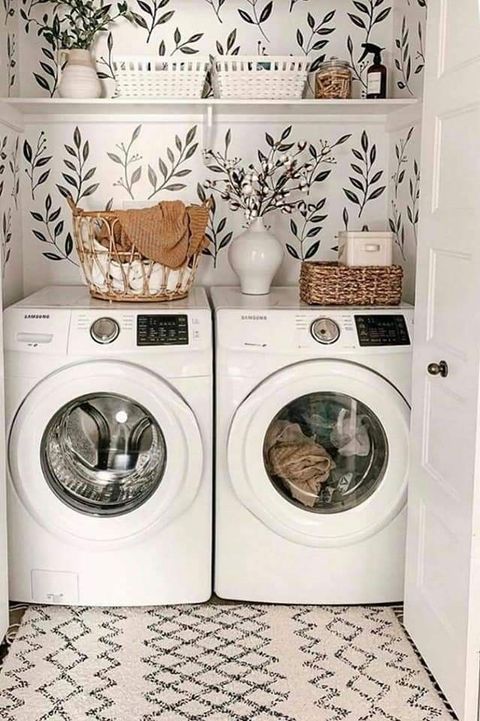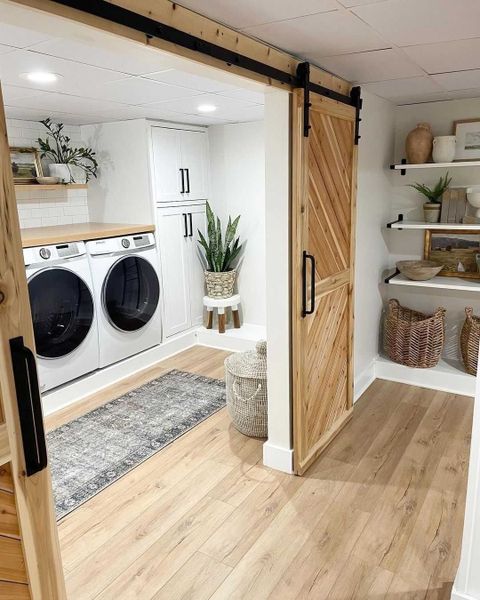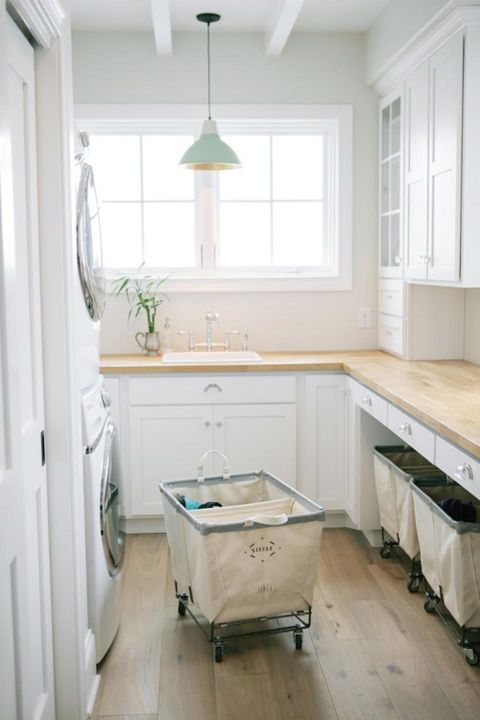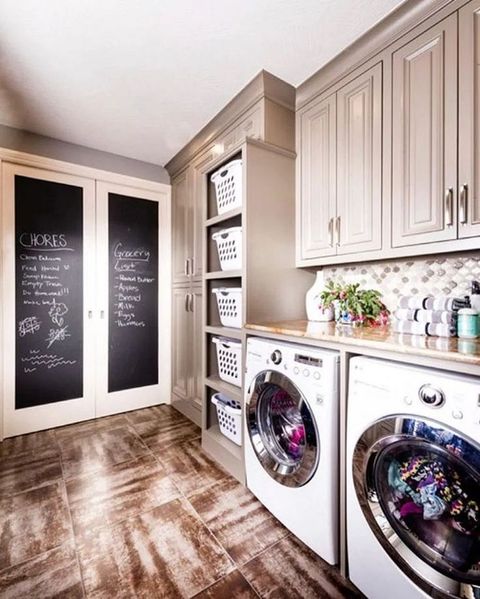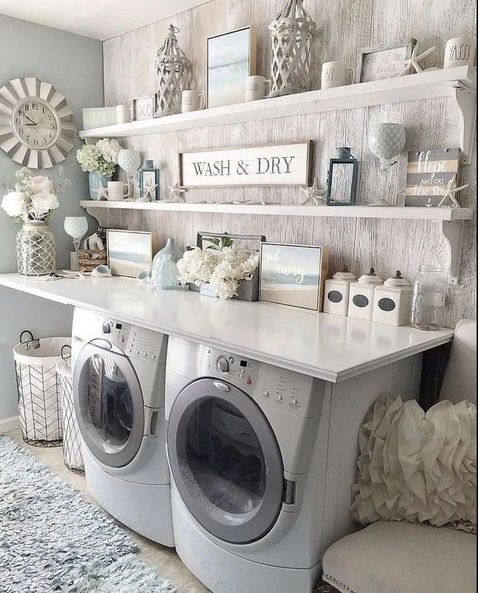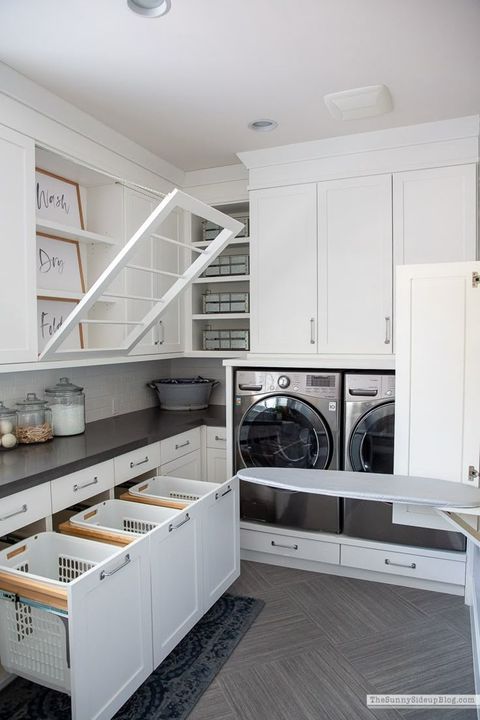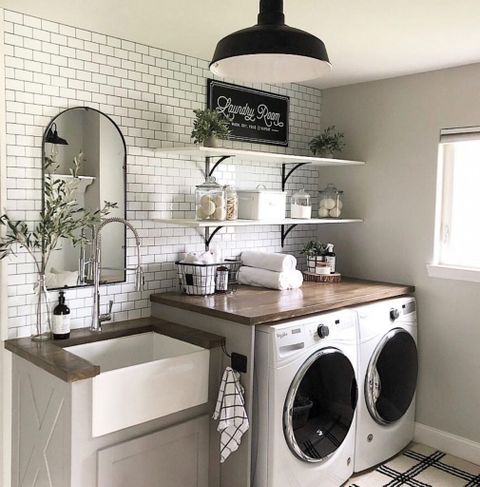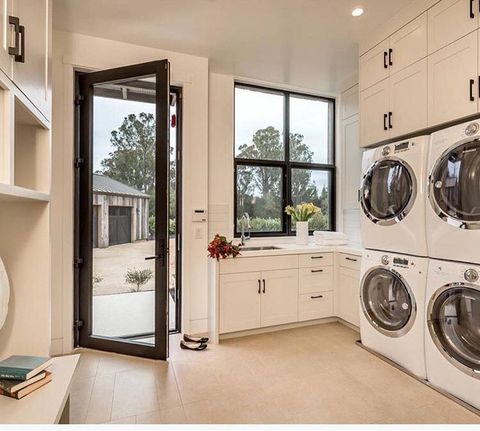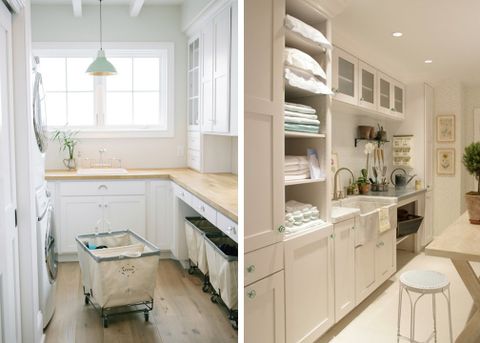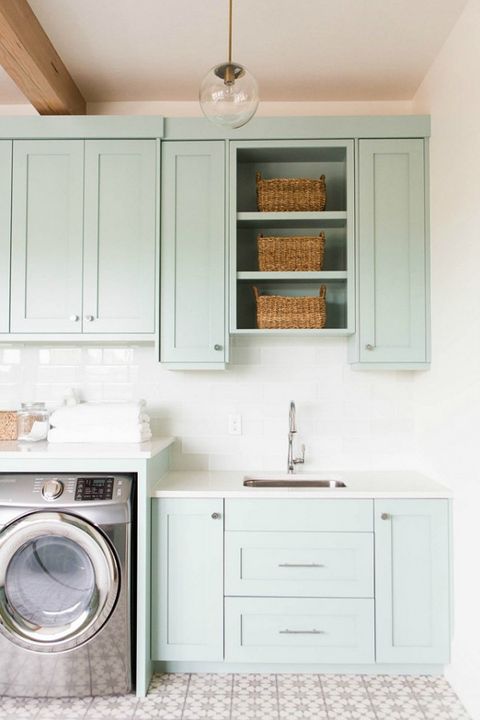We all have to do laundry, right? It’s a never-ending cycle of washing, drying, and folding. But what if your laundry room wasn’t just a place where chores happen, but a space that actually helps make those chores easier? A well-designed laundry room can be a game-changer for your household, saving you time and frustration. Let’s explore how to create a laundry haven that works for absolutely everyone, from the littlest helpers to the busiest adults.
Think about your current laundry setup. Is it cramped? Is the machine awkwardly placed? Is there nowhere to sort clothes or fold them neatly? For many of us, the laundry room is an afterthought, a utilitarian box stuffed with machines. But it doesn’t have to be this way. Designing a laundry room with everyone in mind means considering accessibility, efficiency, and even a little bit of joy. It’s about creating a space that simplifies a necessary task and, dare I say, makes it a bit more pleasant. Ready to transform your laundry experience?
Understanding the Needs of Your Household
Before you even think about paint colors or cabinetry, take a moment to consider who uses your laundry room and what their specific needs might be. Are there young children who might need help reaching controls or sorting? Are there elderly family members who could benefit from ergonomic designs and easier-to-use appliances? Do teenagers have specific laundry habits (or lack thereof!) that need accommodating?
Think about:
- Height Accessibility: Can everyone comfortably reach the washing machine and dryer controls? Are shelves at accessible heights for different family members?
- Sorting and Folding: Is there enough counter space or an integrated folding station? This is crucial for efficiency and preventing piles of clean clothes from lingering.
- Storage: Where do detergents, fabric softeners, stain removers, and laundry baskets go? Good storage keeps things tidy and within reach.
- Ergonomics: Consider the physical strain of doing laundry. Can you minimize bending and reaching?
By understanding these individual requirements, you can start to build a laundry room that truly serves everyone. It’s about thoughtful planning, not just aesthetics.
Smart Layouts for Maximum Efficiency
The layout of your laundry room is paramount to its functionality. A linear setup, where the washer and dryer are side-by-side, is common, but not always the most efficient. Consider a few popular and effective arrangements:
- Galley Style: Washer and dryer on one wall, with a countertop above and storage. This is space-saving and keeps everything in a neat line.
- U-Shaped: Utilizes three walls, offering ample counter space and storage. This can feel more enclosed but is incredibly practical.
- L-Shaped: Combines elements of the galley and U-shape, offering a good balance of workspace and openness.
Key Considerations for Layout:
- Appliance Placement: Ensure there’s enough clearance around machines for ventilation and easy loading/unloading. Stacking washer and dryer units can save floor space if your ceiling height allows.
- Work Triangle: Similar to a kitchen, think about a functional flow between the sink (if you have one), washer, dryer, and folding area. Minimizing steps between these zones saves time.
- Doorways and Traffic Flow: Make sure doors don’t impede movement or crash into appliances. There should be enough room to maneuver laundry baskets.
A well-planned layout prevents you from feeling like you’re playing a game of Tetris every time you do a load.
Appliance Choices That Cater to All
The appliances themselves play a huge role in how user-friendly your laundry room is. Modern appliances offer features that can make life significantly easier for everyone.
- Front-Loaders vs. Top-Loaders: Front-loaders are generally more energy and water-efficient and often have larger capacities. However, they require bending to load and unload. If bending is an issue, consider pedestals to raise the machines. Top-loaders can be easier for some to load, especially those with mobility challenges.
- Smart Features: Many new washers and dryers come with Wi-Fi connectivity, allowing you to control cycles remotely, receive notifications when a load is done, and even diagnose issues. This can be a lifesaver for busy households.
- Capacity: Choose a capacity that suits your family size and laundry habits. Overloading machines is inefficient and can damage them.
- Noise Levels: If your laundry room is near living areas, look for machines with low noise and vibration ratings.
When selecting appliances, read reviews and, if possible, try them out. Think about the ease of operation, the clarity of the display panels, and how well they’ll fit into your planned layout.
Smart Storage Solutions for a Tidy Space
Clutter is the enemy of efficiency, especially in a busy room like the laundry. Smart storage is key to keeping your laundry room organized and functional for the whole family.
- Cabinetry: Wall cabinets offer a place to hide detergents, cleaning supplies, and other essentials, keeping them out of sight and out of reach of curious little hands. Open shelving can be good for frequently used items like laundry baskets or decorative elements, but be mindful of dust.
- Drawers and Pull-outs: Deep drawers are fantastic for storing bulkier items, while pull-out shelves or baskets make it easy to access everything without having to reach into the back.
- Integrated Folding Surfaces: A countertop that extends over your machines or a dedicated pull-out folding board is invaluable. This eliminates the need to find floor space or a bed to fold clothes.
- Hanging Space: Don’t forget about a rod for hanging items that shouldn’t be folded immediately, like freshly dried shirts or delicate garments. This can be a simple tension rod or a more permanent fixture.
- Labeling: For families with multiple members, clear labeling on shelves and baskets can help everyone put things back in the right place. This fosters a sense of shared responsibility.
Think vertically! Utilizing wall space with shelves and cabinets can make a huge difference, especially in smaller rooms.
Creating an Accessible and Inclusive Environment
Designing for everyone truly means designing inclusively. This goes beyond just basic functionality to ensure that people of all ages and abilities can use the space comfortably and safely.
- Ergonomic Heights: As mentioned, consider appliance heights. Pedestals for front-loaders are a great example. For lower shelving, ensure it’s not too low to cause strain.
- Clear Pathways: Ensure there are no tripping hazards and that pathways are wide enough for wheelchairs or walkers if needed.
- Easy-to-Use Controls: Look for appliances with large, clear buttons and displays. Voice-activated features are becoming more common and can be a boon for those with visual impairments or limited mobility.
- Good Lighting: Adequate and well-placed lighting is crucial. Task lighting over work surfaces and general ambient lighting make the space safer and more pleasant to use.
- Sink Placement and Height: If you have a sink, ensure it’s at a comfortable height for all users. A deep basin is also helpful for pre-soaking or hand-washing.
By incorporating these elements, you create a laundry room that is not only efficient but also a welcoming space for every member of your household, promoting independence and reducing barriers.
Adding Touches That Make Life Simpler and Brighter
Beyond the nuts and bolts, there are smaller touches that can elevate your laundry room from purely functional to a space you actually don’t mind spending time in. And when a space is more pleasant, chores feel less daunting.
- A Dedicated Sorting Station: Use multiple bins labeled for lights, darks, delicates, or even by family member. This streamlines the washing process.
- Built-in Ironing Board: A fold-down ironing board can be a real space-saver and makes ironing much more convenient.
- Good Ventilation: A powerful exhaust fan is essential to prevent moisture and mildew buildup, keeping the room fresh and the appliances in good condition.
- A Splash of Color or Personality: Even a utilitarian space can benefit from a bit of personality. A cheerful paint color, some artwork, or a few plants can make a big difference.
- Durable and Easy-to-Clean Surfaces: Opt for flooring and countertops that can withstand moisture and are simple to wipe down.
Ultimately, a simple laundry room is one that has a place for everything and makes the process of doing laundry as smooth as possible. It’s about anticipating needs and creating solutions that work for your unique family dynamic.
Designing a laundry room that works for everyone isn’t just about aesthetics; it’s about creating a functional, efficient, and inclusive space that simplifies a universal chore. By carefully considering the needs of each family member, planning a smart layout, choosing the right appliances, and implementing clever storage solutions, you can transform a mundane task into a more manageable and even pleasant experience.
Remember, the goal is to reduce friction and make life a little bit easier. A well-designed laundry room is an investment in your home and your family’s well-being. So, take a look at your current setup, dream a little, and start planning for a laundry room that truly serves you all. Happy washing!

